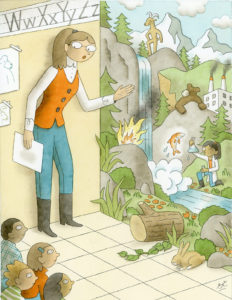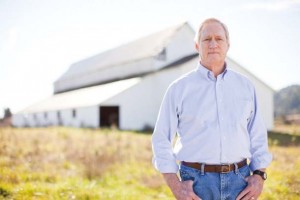California leads the nation in the number of land trusts, with over 150. Similar to their Bay Area counterparts, land trusts throughout the state use conservation easements to protect a wide range of natural resources, from forests to farmland to desert. However, several distinctions can be made regarding the use of easements outside the Bay Area.
First, easements to conserve rangeland typically cover much larger acreages—10,000 acres and more—than we see in the Bay Area. Land trusts active in the Sierra, the foothills, and the Central Coast regions have used conservation easements to protect stunning rangeland properties with abundant wildlife. Examples include the Land Trust for Santa Barbara County, Sierra Foothill Conservancy, and the Sequoia Riverlands Trust.
Second, conservation easements are not as common in Southern California. This is particularly true of the coastal counties where pressures for both development and recreational uses are enormous. Conservation easements are used more in the inland counties, notably San Bernardino and Riverside.
Third, conservation easements are being employed in creative ways in the northern forests. For example, Pacific Forest Trust is spearheading an effort to protect forests with easements and produce carbon credits as part of the California Climate Action program. In many of these, sustainable harvesting of timber is permitted. Farther north, the Northcoast Regional Land Trust uses easements to protect properties with a mix of rangeland, farmland, and working forests. One of California’s oldest land trusts, Sempervirens Fund, focuses on the conservation of redwoods.
Fourth, land trusts around the state are using conservation easements as an important tool in their efforts to protect water quality and to create “river parkways”—linear, natural settings that allow public access along the river and also help protect water quality. The San Joaquin River Parkway and Conservation Trust was the first in this arena, but American River Conservancy and the Feather River Land Trust are also working to conserve their rivers and environs.
Finally, mitigation, as in the Livermore Valley, has become a significant impetus for conservation easements statewide, usually to offset the loss of wildlife habitat or prime agricultural soils to development projects. Public agencies with regulatory responsibilities determine when mitigation is required as a condition for development; local land trusts are then called in to handle the transactions and oversight. In the greater Sacra­mento area, for instance, the Sacramento Valley Conservancy has designed and accepted conservation easements to mitigate for the loss of wildlife habitat.
With their growing importance in protecting California’s open space, the land trusts recognized the need to coordinate their efforts and broaden their communi­cation activities. As a result, they formed the California Council of Land Trusts in 2004. Among other functions, the council responds to legal and political challenges to ensure that conservation easements remain a viable and flexible tool for protecting natural resources. It seeks to broaden understanding of the strengths and limitations of conservation easements, and to show how voluntary land conservation fits within a spectrum that includes land use controls and regulation. Each mechanism has a role to play in protecting California’s natural resources. The strength that conservation easements bring to this broader effort is threefold: they can be shaped to the particular needs of a property; they bring together willing landowners and experienced land managers; and they provide for conservation in perpetuity. That is a powerful combination!

.jpg)



-300x199.jpg)